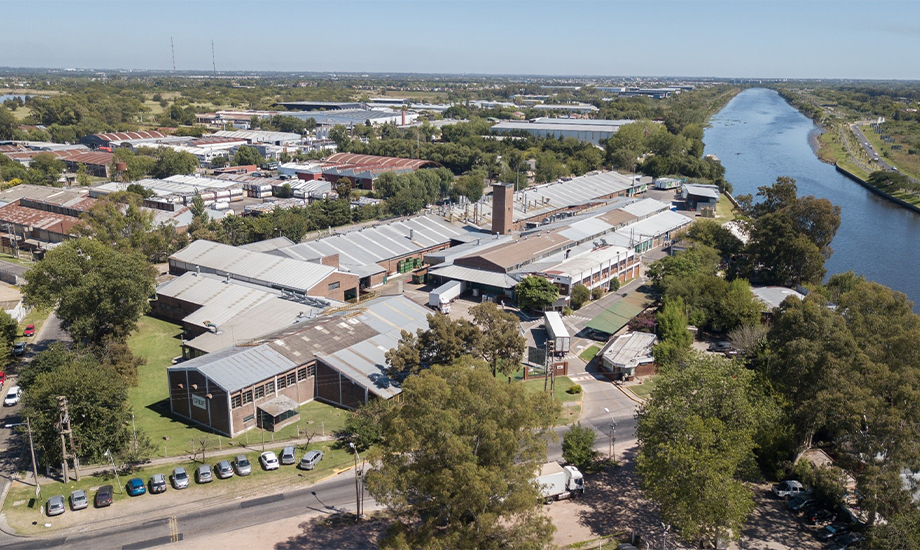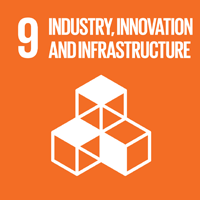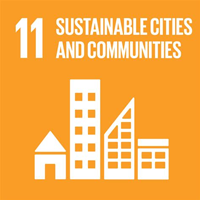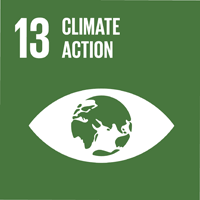- Sustainability at Greif
- Stratégies de développement durable
- Objectifs et performances
- Indices de reporting ESG
- Téléchargements de rapports
Points forts
- Greif’s Build to Last Strategy and Protecting Our Future mission embed climate considerations into our day-to-day decision-making and long-term strategic planning.
- We executed a virtual power purchase agreement (VPPA) with Enel Green Power España for 100 GWh of renewable energy annually, enough to offset approximately 65 percent of our electricity consumption in Europe.
- Greif’s land management subsidiary, Soterra, generated 59 percent of its revenue from nature-based solutions and renewable energy initiatives in 2024. We added geological sequestration, utility-scale solar installations, and development of Improved Forest Management carbon offsets to our sustainable forest management practices.
- Greif refined our Scope 3 emissions reduction methodology by conducting a thorough gap analysis to improve the quality of the data and identify new opportunities to engage with our value chain partners to reduce emissions.
- In 2024, our combined Scope 1 and Scope 2 (market-based) greenhouse gas (GHG) emissions were 1,120 thousand metric tons CO2e, compared to 1,108 thousand metric tons in 2023.
Pourquoi la stratégie climatique est importante
Our robust climate strategy is driven by our belief that it is our responsibility to reduce our impact as a manufacturing company. This is also crucial to building and maintaining relationships with our colleagues, customers, partners, and shareholders. Climate change is a top priority for our customers, many of whom have set ambitious climate goals and are working to foster transparency across their operations and value chains. We aim to be the trusted partner that supports our customers in achieving these goals by using data-driven decision-making to provide guidance and recommendations around sustainable solutions. Our climate strategy is integrated into every facet of our business, with an emphasis on driving projects that reduce our emissions. Our product portfolio, which emphasizes manufacturing innovation and performance efficiency, reflects how we are working with customers to provide innovative, low-carbon, and circular products to help them meet their goals.
Our climate strategy is also a vital part of attracting and retaining top talent, which is needed to protect our competitive advantage in the market. We recognize the value of hiring passionate colleagues early in their career and providing a culture where they can innovate and grow. At Greif, we find a strong correlation between business success and employee engagement at all levels of our organization, and our climate strategy is an important component of that process.
Our Approach
We are working to consider and reduce the carbon footprint at each stage of the life cycle of our products, from raw material extraction to end-of-life disposal. Since 2007, we have set ambitious goals to reduce our GHG emissions and energy use, most recently setting a 2030 science-aligned target to reduce our absolute Scope 1 and Scope 2 GHG emissions by 28 percent from a 2019 baseline.
Engaging Greif colleagues is an important part of our climate strategy. To empower action and transparency, every colleague has access to energy dashboards that detail usage performance and help colleagues make more informed decisions that move us closer to our goals. Via Greif University, our internal training and education platform, colleagues also have access to thousands of courses to support them on their sustainability journey. We are working to embed our climate strategy at every level of the organization and value chain because we know success will only be achieved if there is commitment from everyone.
Gestion des risques liés au changement climatique
Over the past three years, we have conducted several internal climate risk workshops in which colleagues from varying departments, locations, and backgrounds collaborate to identify, rank, and evaluate regulatory, market, and physical climate-related risks and opportunities. In 2023, we successfully completed a third-party physical risk assessment to deepen our understanding of the climate risks and financial impacts associated with our operations. In 2024, our efforts focused on addressing the data points from this analysis.
Our scenario analysis included three future scenarios, including global temperature increases of below 2°C (Representative Concentration Pathway (RCP) 2.6), 2 to 3°C (RCP 4.5) and over 4°C (RCP 8.5), to identify risk likelihoods and impacts to our operations. The assessment identified precipitation, flooding, and heat stress as key physical risks across our global operations. Please refer to our Rapport du CDP pour plus d'informations sur cet exercice d'analyse de scénario climatique.
|
Risque / Opportunité |
Sujet |
Description
|
|---|---|---|
|
Risque physique |
Catastrophe naturelle |
Inondation/ouragan/séisme/tempête de vent de grande ampleur, etc. entraînant la perte d’une installation de production clé ou précieuse (une ou plusieurs).
|
|
Risque physique |
Catastrophe environnementale directe |
Événements majeurs liés au climat/à la météo dans des installations clés telles que les opérations de Delta, Vreeland et Paper Mill, entraînant un événement environnemental majeur, un événement financier et pouvant entraîner des problèmes de relations publiques/d'image.
|
|
Risque de transition |
Mécanismes de tarification du carbone |
Les réglementations sur la tarification du carbone, telles que les systèmes de plafonnement et d’échange de droits d’émission et les taxes sur le carbone, ont un impact sur Greif sur certains marchés (Europe et Amérique du Nord) et pourraient émerger dans d’autres régions. Cela se traduit par une dépense substantielle et croissante.
|
|
Risque de transition |
Investissements inefficaces / planification du capital |
Le manque de ressources pour comprendre pleinement l'impact des changements réglementaires sur les décisions stratégiques et les investissements peut conduire à une allocation de capital sous-optimale. Cela peut se traduire par des installations obsolètes plus rapidement que prévu et un retour sur investissement inférieur aux attentes.
|
|
Risque de transition |
Résilience / continuité de la production |
Des capacités organisationnelles exceptionnelles, la résilience commerciale, la préparation et l'agilité associées permettront à Greif de reprendre plus rapidement les niveaux de production et de mieux soutenir ses collègues, ses clients et ses communautés au fil du temps si les perturbations et les catastrophes deviennent plus fréquentes.
|
|
Risques et opportunités de transition |
Changement dans les préférences des clients
|
La demande de produits durables est en hausse. Le risque que Greif ne réagisse pas assez vite pour répondre à l'utilisation croissante de matériaux recyclés dans les processus de production pourrait réduire la demande pour les produits et services de Greif. En outre, les réglementations liées au climat qui limitent les marchés finaux des produits Greif, tels que l'industrie pétrolière et gazière, peuvent limiter l'activité de Greif en diminuant la demande pour ses produits et services sur des marchés clés. Greif peut capitaliser sur cette opportunité en développant rapidement son portefeuille de produits durables.
|
| Opportunité de transition | Impact sur l'activité de recyclage de Greif | Les scénarios climatiques les plus ambitieux reposent sur l’augmentation des taux de recyclage de l’acier et du plastique. Si Greif se positionne correctement, elle pourrait être en mesure d’accroître l’ampleur de ses activités actuelles de reconditionnement. |
|
Opportunité de transition |
Résilience
|
Des capacités organisationnelles exceptionnelles associées à la résilience, à la préparation et à l'agilité de l'entreprise permettront à Greif de reprendre les niveaux de production plus rapidement et de mieux soutenir ses collègues, ses clients et ses communautés au fil du temps si les perturbations et les catastrophes deviennent plus fréquentes. |
Veuillez visiter ce rapport Gestion des risques section pour en savoir plus sur notre processus de gestion des risques d'entreprise.
Stratégie climatique et feuille de route pour la décarbonisation
Renewable energy and energy efficiency are key pillars of our climate strategy. In 2024, we increased our focus on procuring renewable energy via VPPAs and on-site solar development. To reduce carbon impacts beyond our value chain, we also leveraged nature-based solutions like geologic carbon sequestration and improved forest management offsets. Please visit the Donner la priorité à la nature section of the report to learn more about our nature-based solution efforts.
Energie renouvelable
Renewable energy procurement is core to our decarbonization strategy. Meeting the long-term energy-related challenges associated with climate change requires a meaningful shift towards renewables, such as solar, biomass, and wind energy. We strive to identify high-impact opportunities to catalyze our clean energy transition. Since 2016, we have increased our sourcing of renewable energy from both on-site and off-site locations. Greif facilities in North America, Brazil, Chile, China, the Czech Republic, Israel, and the Netherlands are powered by renewable energy, and we recently added rooftop solar to our Singapore facility. Of Greif’s total energy consumption in 2024, 16 percent (892 MWh) came from renewable energy sources such as biomass and solar energy. We will continue to identify and capitalize on additional opportunities to procure renewable energy.
Over the past three years, we conducted an extensive exploration of renewable alternatives to overhaul our electricity and natural gas consumption. As Greif’s Scope 2 emissions make up about half of our total Scope 1 and 2 emissions, switching to renewable energy would eliminate a significant portion of our overall emissions. In 2024, we signed a pivotal contract with a developer for a large VPPA project in Spain, to supply renewable energy for our European operations.
Virtual Power Purchase Agreement with Enel Green Power España
In 2024, Greif announced the signing of a virtual power purchase agreement (VPPA) with Endesa’s renewable subsidiary, Enel Green Power España (EGPE). Through the VPPA, Greif will purchase approximately 70 percent of the projects’ output, which will lead to approximately 100 GWh annually and measurable progress towards our long-term sustainability and climate goals. The solar VPPA is a significant step toward achieving a reduction of our Scope 1 and 2 greenhouse gas emissions by 28 percent by 2030, compared to a 2019 baseline. The renewable electricity generated by the project represents approximately 65 percent of Greif’s Scope 2 emissions in Europe and approximately 3 percent of our global Scope 1 and 2 emissions. By adding renewable energy to the Spanish grid, this initiative drives meaningful emissions reductions and supports a cleaner energy future. To read more about this project, please see the press release.

We are also working to increase renewable energy adoption via solar lease development. Greif is rapidly scaling our solar programs, with 50,000 acres of Soterra-managed land included in lease options with 13 different solar energy developers working on 22 projects. One project, a 100 MW solar farm in Louisiana, started construction in 2024. Please visit the Donner la priorité à la nature section of the report to learn more about our renewable energy procurement efforts.
Efficacité énergétique
The role of energy efficiency in capital deployment is key to achieving our energy usage goals. We incorporate ESG criteria into our capital allocation system, placing priority on cost savings, reduced energy consumption, minimized raw materials usage, and improved health and safety for both people and products.
Greif colleagues regularly look for new opportunities to advance technology and conserve energy as part of our culture of continuous improvement. Our energy efficiency projects include equipment upgrades and process optimizations designed to strategically curb energy demand. In 2024, we implemented 58 energy efficiency projects, saving an estimated 35,000 MWh. Additional energy efficiency projects are routinely initiated by Greif’s Lean Six Sigma program.
Another success for the company has been our focus on LED lighting retrofits. We are actively working to retrofit our facilities to at least 80 percent LED lighting to conserve energy, reduce emissions, and create a safer and more pleasant work environment for Greif colleagues.
Energy Efficiency Across Our Operations
Throughout 2024, teams at our facilities drove innovative projects that demonstrate excellence in energy efficiency, cutting energy costs, improving efficiency, and support our sustainability goals. Greif Singapore converted a lithographic coating oven into an internal-lined ends line with an automated spraying system. The project is estimated to save more than 550 MWh per year while improving operational efficiency and capacity. Greif Saudia Arabia installed a logic timer system to manage two motors, controlling an automatic shut off during changeovers, breaks, and other periods of inactivity. These are just two examples of our colleagues’ efforts to integrate sustainability and business objectives into our operations.

For more information about our energy efficiency projects, please see sections 7.55 of our 2024 CDP Climate Response.
Économie circulaire
At the heart of our climate strategy is an emphasis on circularity, specifically increasing the recyclability of our products, expanding our reconditioning network, implementing downgauging techniques, increasing the use of recycled raw material content in our products, and effectively managing waste.
In addition to reducing Scope 1 and 2 emissions, circularity initiatives also reduce our Scope 3 emissions linked to raw material extraction and converting, transportation, and waste sorting and processing and end of life management of our used products. Additionally, these initiatives minimize the amount of material we send to a landfill, thereby decreasing our production of landfill gas, an especially potent mix of greenhouse gases released during decomposition. We currently divert 87 percent of our waste away from landfills and aim to increase that percentage where possible.
Veuillez visiter ce rapport Déchets section to learn more about our waste management efforts. Please visit this report’s Fabrication circulaire et Innovation sections pour en savoir plus sur nos efforts pour faire progresser l'économie circulaire.
Supply Chain Emissions
Through our Global Supply Chain (GSC) Sustainability Program, we operationalize our commitment to reduce carbon emissions throughout our supply chain. Reduction projects are prioritized and embedded into three key areas of influence: energy procurement, logistics networks, and raw material sourcing.
Our energy procurement managers lead or collaborate in our renewable energy sourcing projects. Sourcing managers identify opportunities for emissions reduction through supplier collaboration, product ideation and trials, and purchasing decisions. Our logistics managers manage projects to increase efficiency in our global transportation and logistics networks.
In 2024, we conducted a thorough analysis of our Scope 3 emissions to develop a pipeline of strategic reduction activities and projects for the medium- to long-term. We evaluate projects based on our level of influence and impact, prioritizing projects we can directly execute within our organization. We are incorporating indirect projects into engagement plans we are building to inform our work with carriers, suppliers, and third-party partners.
Veuillez visiter ce rapport Gestion de la chaîne d'approvisionnement mondiale section pour en savoir plus sur notre travail tout au long de notre chaîne d'approvisionnement.
Goals, Progress, & Performance
Objectifs 2030 :
- Réduire les émissions absolues de GES de portée 1 et de portée 2 de 28 % par rapport à la référence de 2019.
- Réduire notre consommation d’énergie de 10 % pour chaque unité de production par rapport à 2019.
We partnered with a third party in 2020 to conduct an evaluation of our ability to achieve a Science Based Target Initiative (SBTi) aligned goal. The analysis led to Greif’s public commitment to a 28 percent reduction in absolute Scope 1 and Scope 2 emissions by 2030, based on a 2019 baseline. Aligned with prevailing climate science, this target aims to limit global warming below 2°C. While we are not yet able to provide a detailed analysis of our absolute progress against this goal due to acquisitions and ongoing data improvements, our 2024 Scope 1 and Scope 2 (market-based) absolute emissions increased by about 1 percent compared to 2023.
In 2024, we made progress through renewable energy procurement, nature-based solutions, and energy efficiency efforts. We also analyzed our Scope 3 emissions and, though we cannot set a Scope 3 target at this point in our sustainability journey, we are working to tackle these emissions while building resiliency in our supply chain. Further, Greif took our first steps in expanding ISO 14001 certifications to additional sites. ISO 14001 provides a management system framework for Greif to integrate climate change efforts into the day-to-day operations at each site on a granular level.
An amendment to ISO 9001 certifications was introduced in 2024 which integrates climate change considerations into organizational management systems. Greif’s operations team has been working to incorporate this into our ISO 9001 certification process. We actively seek opportunities to collaborate with our suppliers, customers, and other stakeholders to reduce our emissions and advance our climate strategy.
Données sur l'ÉNERGIE et les émissions de GES
| Exercice 2020 | Exercice 2021 | Exercice 2022 | Exercice 2023 | FY 2024 | |
|---|---|---|---|---|---|
| Total Energy Consumption (MWh) | 5,423,000 | 5,832,000 | 6,145,000 | 5,594,000 | 5,450,600 |
| Energy Reduction per Unit of Production, compared to Baseline1,2 | - | -0.30% | -2.30% | -5.50% | 3.70% |
| Exercice 2020 | Exercice 2021 | Exercice 2022 | Exercice 2023 | FY 2024 | |
|---|---|---|---|---|---|
| GHG Scope 13 | 693 | 697 | 756 | 605 | 625 |
| GHG Scope 23 (Location-based) | 590 | 557 | 565 | 494 | 476 |
| GHG Scope 23 (Market-based) | 597 | 569 | 578 | 503 | 495 |
| GES de portée 3 | 4,148 | 4,357 | 5,019 | 5,062 | 5,144 |
| GHG Total Scope 1, 2, & 3 (Location-based) | 5,431 | 5,611 | 6,340 | 6,161 | 6,245 |
| GHG Total Scope 1, 2, & 3 (Market-based) | 5,438 | 5,623 | 6,353 | 6,170 | 6,264 |
Greif Pudahuel au Chili réalise 100% d'énergie renouvelable
L'usine sidérurgique de Greif à Pudahuel au Chili a été notre première installation en Amérique latine à fonctionner avec une énergie 100 % renouvelable. Grâce à un projet de deux ans, en partenariat avec le fournisseur d'énergie IMELSA ENERGIA, l'usine a pu transférer l'intégralité de son approvisionnement en électricité vers des sources 100 % renouvelables. L'usine produit de grands fûts en acier, des fûts coniques et des bouteilles d'eau pour les marchés des produits chimiques, des huiles lubrifiantes et des aliments et boissons. Ce changement fait progresser notre stratégie de développement durable, soutient notre objectif de réduction des émissions de GES à l'horizon 2030 et contribue à soutenir les objectifs de réduction des émissions de Scope 3 de nos clients.
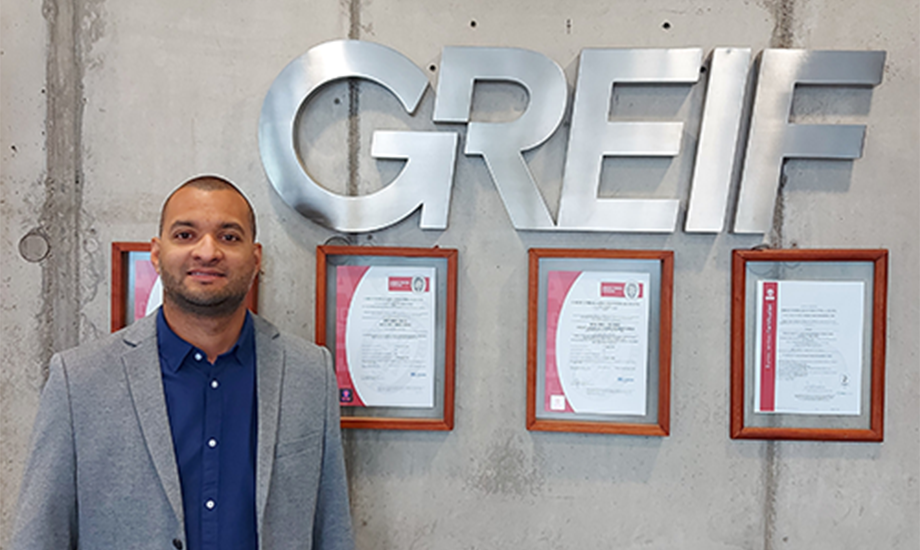
Réponse à la demande Enel X
Depuis 2011, Greif participe au programme de réponse à la demande (DR) avec Enel X, une division du groupe Enel Worldwide, une multinationale de l'électricité et un acteur intégré de premier plan sur les marchés mondiaux de l'électricité et du gaz. Le DR et la surveillance de l'énergie en temps réel d'Enel X permettent à une entreprise d'accéder aux opportunités du marché pour monétiser la flexibilité, augmenter la fiabilité opérationnelle et mettre en évidence les avancées en matière de durabilité. Greif a accumulé plus de 144,4 millions de livres sterling de bénéfices DR, dont 144,3 millions de livres sterling au cours des trois dernières années. Environ 17 centrales Greif sont inscrites au DR avec Enel X. Nous évaluons actuellement si les sites sont éligibles et s'ils sont des candidats appropriés pour participer au DR afin d'étendre notre participation au programme.

Étude énergétique LATAM Tigre
Le site LATAM Tigre de Greif a mené une évaluation multidisciplinaire de toutes les usines d'Amérique latine afin de mettre en œuvre une réduction de 6% de la consommation d'énergie par unité produite d'ici 2025 par rapport à une base de référence de 2019. Toutes les machines, pièces périphériques, équipements généraux et éléments consommant de l'électricité ont été identifiés et évalués, identifiant 447 domaines d'intérêt énergétiques à travers l'Amérique latine. À partir de ces domaines d'intérêt, 70 projets énergétiques stratégiques ont été identifiés. En novembre 2023, 6 projets d'efficacité énergétique ont été achevés en Amérique latine, ce qui a permis de réaliser des économies d'énergie de $29 300 par an et une réduction de la consommation d'énergie de 63 000 kilowattheures par an.
